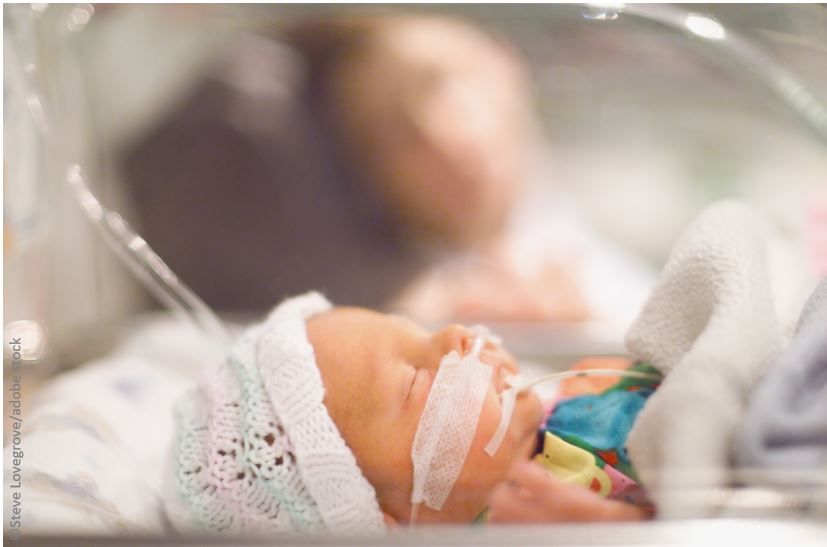- Clinical Technology
- Adult Immunization
- Hepatology
- Pediatric Immunization
- Screening
- Psychiatry
- Allergy
- Women's Health
- Cardiology
- Pediatrics
- Dermatology
- Endocrinology
- Pain Management
- Gastroenterology
- Infectious Disease
- Obesity Medicine
- Rheumatology
- Nephrology
- Neurology
- Pulmonology
US Preterm Birth Rate Reaches 15-year High, Racial Disparities are "Unacceptable"

Preterm births in the United States reached their highest level in 15 years, according to the March of Dimes (MOD) 2022 Report Card. The 2021 rate of 10.5% of live births marked an increase of 4% from the previous year and the highest rate since 2007.
The steady increase in the US preterm birth rate since 2014 has earned the country a D+ in the report card, according to a MOD statement.
Preterm birth rates increased in 45 states as well as in Washington, DC, and Puerto Rico. The 2022 report awards only 1 state a score in the A range (ie, preterm birth rate between 7.7% and 8.1%)—Vermont.
Eight states, including New Hampshire, California, Oregon, and Massachusetts, earned a mark in the Bs (8.2% - 9.2%). Failing marks, with rates of ≥11.5%, were given to 9 states, located primarily in the US south and southeast.
Perncious racial disparities
Women of all races experienced an increase in the number of preterm births. Black and Native American women, however, are 62% more likely to deliver prematurely and their neonates are twice as likely to die compared to those born early to White women, according to the statement.
Preterm birth rates increased in 2021 for Black mothers (14.4% to 14.7%) and for Native American/Alaskan Native mothers (11.6% to 12.3%). Births declined in 2021 by 3% for Asian American women but they had the largest increase (8%) in preterm births compared to women of all other races/ethnicities.
The US preterm birth disparity ratio also has gotten worse, the report confirms, when measured against a 2012-2014 baseline. Highest levels of overall disparity were calculated for New York, Wisconsin, and Mississippi and the lowest levels for states including New Hampshire, South Dakota, and Oregon.
Many factors combine to drive preterm birth rates higher including inadequate prenatal health care and preexisting health issues (eg, diabetes, hypertension, obesity) among women who become pregnant. According to the MOD statement, access to prenatal care is in adequate for more than 21% of Black women and 28% of Native American/Alaskan Native women.
Moreover, the report states that persistent racial disparities across maternal and infant health measures compounded by the COVID pandemic make the US “among the most dangerous developed nations for childbirth.”
Moreover, the report states that persistent racial disparities across maternal and infant health measures compounded by the COVID pandemic make the US “among the most dangerous developed nations for childbirth.”
“This year’s report sheds new light on the devastating consequences of the pandemic for moms and babies in our country,” said Stacey D. Stewart, president and CEO of March of Dimes. “While fewer babies are dying, more of them are being born too sick and too soon which can lead to lifelong health problems. Pregnant women with COVID have a 40% higher risk of preterm birth and we know more women are starting their pregnancies with chronic health conditions which can further increase their risk of complications. It’s clear that we’re at a critical moment in our country and that’s why we’re urging policymakers to act now to advance legislation that will measurably improve the health of moms and babies.
The report also emphasizes the ongoing and disturbingly high rates of low-risk Cesarean births, with rates highest among Black mothers (31.2%). During 2021, Cesarean delivery rates increased from 31.8% to 32.1% and today comprise one-third of all US births. The Centers for Disease Control and Prevention estimates that 8 in 10 maternal deaths are preventable; reducing rates of Cesarean births—a major surgical procedure with associated short- and long-term risks—could help reduce adverse maternal health outcomes.
The 2022 Report Card closes with a list of state-based initiatives to help address significant deficiencies in prenatal and infant health care. Among them are:

